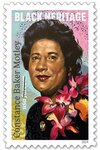








In the restored grandeur of the historic Lincoln School in West Plains, a symbol of African American education during the segregation era now reborn as a cultural and educational center, famed artist Charly Palmer and his wife, Dr. Karida Brown, sat down to discuss their journeys, inspirations, and the intertwining of their lives in art and academia. Their interview, rich with personal anecdotes and reflective insights, offered a deep dive into their professional lives and the profound connection they share with their heritage.
Early Life and Influences
Palmer’s journey into the world of art and social commentary began in the small, tightly-knit community of Fayette, Alabama, a place of profound familial ties and formative experiences. The simplicity of life in Fayette, with its familial gatherings and the omnipresent sense of community, instilled in Palmer a deep appreciation for his roots and culture. These early experiences in Alabama, imbued with the richness of Southern Black culture, offered Palmer a lens through which he viewed the world—one colored by the nuances of racial and familial dynamics.
“Alabama is where I grew to absolutely love my people,” said Palmer.
As a young boy, the move to Milwaukee introduced Palmer to a different social landscape, marked significantly by the riots of 1968 following the assassinations of Martin Luther King Jr. and Robert F. Kennedy. Witnessing his new city engulfed in turmoil provided a stark contrast to his life in Alabama. These events played a crucial role in shaping his understanding of the complexities of race relations in America and fueled his drive to express these themes through his art.
Dr. Brown's early life on Long Island, New York, presented a different but equally impactful set of influences. Raised in what she described as a "diasporic bubble," Brown was surrounded by a mosaic of Black and Hispanic cultures, rich in diversity yet segregated from the broader white community. This environment, though insulated, was vibrant with the stories of immigrants from the Caribbean and Latin America, which painted her childhood with the vivid colors of a diverse cultural heritage.
Brown's parents, having migrated from the coal mining town of Lynch, Kentucky, carried with them the scars and triumphs of the Jim Crow South. They were products of a colored school system and had firsthand experiences of the challenges and changes during the Civil Rights Movement. Choosing to shield their children from the harsher realities of racial discrimination, they fostered an environment where cultural identity was celebrated without the burden of historical trauma. This approach allowed Brown to grow up with a sense of normalcy and belonging, though somewhat sheltered from the racial tensions that affected much of the United States during her childhood.
Both Palmer and Brown drew heavily from these early experiences throughout their careers. For Palmer, the contrast between the communal, familial settings of Alabama and the racially charged atmosphere of Milwaukee became a recurring theme in his artworks, reflecting the dichotomy of African American experiences. His work not only captures the strife and struggles but also the joy and resilience of Black communities.
For Brown, her insulated upbringing became a foundation upon which she built her academic pursuits. The transition from an unaware child to a conscious academic was sparked by her later exposure to the broader societal structures during her graduate studies. This awakening led her to delve deeply into the complexities of racial and ethnic inequalities, driven by a personal connection to the histories and cultures that shaped her family’s journey through America’s racial landscape.
Together, Palmer and Brown's backgrounds illustrate how deeply personal histories can inform and drive professional and creative endeavors. Their stories highlight the importance of understanding one’s roots and the power of those roots to shape one’s contributions to culture and society. Each narrative, rich in personal and historical complexities, provides valuable insights into the interplay of race, history, and identity in America.
As Palmer transitioned into the world of fine arts, his experiences under the tutelage of influential educators like Carolyn White Trevante played a pivotal role. The educational opportunities provided by programs like the E Magnet in Milwaukee exposed him to a broader spectrum of artistic expressions and historical art movements. Figures like Gustav Klimt and El Greco, along with Western artists like Charles Russell, influenced his artistic development, contributing to his deep respect for classical techniques and his exploratory approach to modern themes.
Palmer’s artistic expression is woven from his early love for diverse musical and artistic influences, historical movements, and a deep-seated appreciation for cultural identity. His affection for the Beatles, evident from a young age, introduced him to a realm of creativity that transcended racial and geographic boundaries. The group’s boldness and distinctive style left a lasting impression on Palmer, influencing not only his appreciation for music but also his unique approach to art. This early musical influence laid the groundwork for his eclectic artistic style, characterized by bold colors and dynamic compositions.
Palmer’s body of work serves as a powerful narrative tool that documents the African American experience. His pieces are housed in prestigious collections including those of the JPMorgan Chase Art Collection, Lambeau Field Stadium, Fiserv Forum, and the Coca-Cola Company. His artistic prowess caught the eye of many, leading to his commission to create the album cover for John Legend’s Grammy-winning album, “Bigger Love,” and the memorable cover for TIME Magazine’s “America Must Change” issue.
Furthermore, Palmer’s fashion interests, particularly his admiration for Alexander McQueen’s daring designs, parallels his approach to visual arts—both are marked by a fearless deviation from the norm. This fascination with individuals who dared to be different has permeated his work, encouraging a portrayal of the African American experience that is both profound and unapologetically honest.
Palmer's commitment extends beyond individual projects. His recent honor of designing a Black History Month stamp featuring Judge Constance Baker Motley exemplifies his broader contributions to honoring Black heritage and its influential figures. This recognition by the U.S. Postal Service not only highlights his artistic excellence but also his role in educating and inspiring through art.
Dr. Brown’s academic journey is deeply intertwined with her personal history and the broader historical narratives of African American communities. Her transition from a sheltered upbringing into a profound scholar of sociology was marked by her encounter with the works of W.E.B. Du Bois and other pivotal Black intellectuals during her higher education. This exposure ignited a passion for exploring the nuanced interplays of race, history, and social transformation within academic frameworks.
Brown’s scholarly pursuits are characterized by a commitment to challenging and redefining narratives around African American history and culture. Her research delves into the lives and experiences of Black families in historical contexts, such as the Great Migration, through innovative methodologies that combine archival research with oral histories. This approach not only enriches the academic field of sociology but also serves as a bridge connecting past experiences with contemporary issues of race and identity.
Her role as the inaugural director of racial equity and action for the Los Angeles Lakers highlights her innovative application of sociological insights to broader societal contexts, showcasing how academic expertise can inform and improve organizational practices. It also put an NBA Championship ring on her finger.
The union of Palmer’s artistic endeavors and Brown’s academic pursuits creates a dynamic interplay where art and scholarship inform and enrich each other. Palmer’s work, with its deep narrative quality and emotional depth, complements Brown’s academic rigor and dedication to uncovering and narrating the untold stories of African American communities. Together, they embody a powerful synergy that bridges creative expression and scholarly research, each enhancing the impact of the other.
This partnership not only fosters a deeper understanding of the African American experience but also actively contributes to the cultural and educational discourse, encouraging a more nuanced appreciation of the complexities of race, history, and identity in America. Their shared commitment to these themes is evident in their collaborations and individual works, each serving as a testament to the power of combining diverse passions and talents to challenge, inspire, and educate.
Creating and Educating
The intersection of Palmer's art and Brown's academia was perhaps most vividly realized in their collaborative efforts on projects like The New Brownies’ Book. This modern iteration of W.E.B. Du Bois’s children’s magazine from the 1920s aimed to provide Black children with stories and images that reflect their heritage and experiences, thereby continuing the legacy of Du Bois’s commitment to Black educational and cultural uplift.
Palmer’s journey as an artist extends beyond the canvas, embodying the role of an educator through his work and interactions. His art serves as a medium for education, each piece a lecture in its own right, conveying stories of resilience, joy, and the complexities of the African American experience. Palmer’s dedication to creating art that resonates emotionally with viewers often leads him to explore historical and contemporary themes, making his work an educational tool that prompts reflection and discussion.
His engagement with educational programs highlights his commitment to nurturing the next generation of artists. Through workshops and seminars, Palmer imparts not just technical skills but also a deeper understanding of the cultural and historical contexts that shape artistic expression. His approach to education is holistic, emphasizing the importance of understanding one’s heritage and the social currents that influence art.
Dr. Brown’s academic career is distinguished by her proactive approach to education, both within and outside university settings. As a professor at Emory University, she is known for her dynamic teaching style that incorporates her extensive research on African American history and social transformations into her curriculum. Brown’s courses often challenge students to consider the sociological impacts of historical events and encourage them to engage with complex issues of race, identity, and systemic inequality.
Her work extends into the community through her involvement in projects that aim to educate and inform public understanding of Black history. Brown’s role in creating new archives and resources for other scholars and the public exemplifies her dedication to education and her belief in the power of informed communities.
Together, Palmer and Dr. Brown have engaged in numerous projects that synergize their artistic and academic talents. One of their most notable collaborations is the development of educational resources that celebrate and teach Black history and culture. This includes their work on children’s books and community projects that aim to make African American history accessible and engaging for younger audiences.
Their collaborative projects often focus on providing platforms for underrepresented voices, ensuring that the diversity within Black narratives is acknowledged and celebrated. By combining Palmer’s artistic insights with Brown’s academic expertise, they create multifaceted educational materials that resonate with a wide audience, fostering a deeper understanding and appreciation of Black culture.
The impact of their work is profound, extending beyond educational settings into the wider community. By integrating art with sociology, they provide a more rounded perspective on the issues they address, making their teachings more relatable and impactful. Their efforts contribute to a greater societal understanding of the complexities of race and history, which is essential for fostering empathy and promoting social justice.
Through exhibitions, lectures, workshops, and publications, Palmer and Dr. Brown continue to educate, inspire, and provoke thought. Their commitment to using their talents for education and community engagement not only enriches the academic and artistic landscapes but also plays a crucial role in shaping a more informed and compassionate society.
Challenges and Inspirations
Both Palmer and Brown discussed the challenges that come with recognition and fame. Palmer expressed a distinct aversion to fame, noting its ability to both inspire and destroy. "Fame destroys. And we lose very special things. There's a huge sacrifice that comes with fame," he stated, echoing sentiments about the impact of fame observed in the lives of his musical heroes and beyond. Brown shared similar reflections on the societal pressures and the importance of maintaining authenticity and focus on community impact.
For Palmer, the intersection of fame and artistic integrity presents a nuanced challenge. As his notoriety has grown, so too has the scrutiny and expectation placed upon his work. Palmer discusses the dual-edged nature of fame, reflecting on how it can simultaneously elevate and isolate an artist. Despite the accolades and recognition, he remains focused on the essence of his craft—creating art that speaks to the soul and addresses the vital narratives of the African American experience.
Palmer's artistic journey is filled with instances where he has had to balance public expectation with his own creative ambitions. His reflections on fame highlight a recurring theme in his narrative: the desire for authenticity in his work amidst the pressures that come with public acclaim. This challenge has shaped him not only as an artist but as a person, making him wary of the pitfalls of fame while still appreciative of the platform it provides for influencing and inspiring others.
Dr. Brown faces her own set of challenges as she navigates the academic landscape with the intent to reshape and expand the understanding of African American history. Her rigorous approach to sociology is driven by a responsibility to correct historical oversights and provide a voice to the underrepresented. This mission, however, is not without its obstacles. The academic world can be resistant to change, and Brown often finds herself at the forefront of debates on how history should be taught and understood.
Her work, particularly in projects like the Obama Presidency Oral History Project, underscores her commitment to preserving and interpreting history with a new lens. Brown's dedication is a response to a deeply felt obligation to honor her ancestors' struggles by contributing to a more accurate and comprehensive historical narrative. This not only provides a clearer picture of the past but also informs current and future policies and societal norms.
Both Palmer and Brown draw significant inspiration from the rich tapestry of African American history and culture. For Palmer, historical figures such as the civil rights icons and artistic pioneers of the past ignite a fire in his creative process. He sees his art as a continuation of their legacy, a way to keep their stories alive and relevant in today's social climate. His works are infused with the strength and resilience of these figures, serving as both a tribute and a call to action.
Brown's scholarly inspirations come from the giants upon whose shoulders she stands, including W.E.B. Du Bois and other seminal figures who have shaped the discourse around race and history. Her academic pursuits are deeply intertwined with her personal history, motivated by the narratives of her family and the broader African American community. These stories fuel her commitment to education and her passion for uncovering and disseminating truths that have been obscured or overlooked.
Together, Palmer and Dr. Brown navigate these challenges and draw from their rich well of inspirations to forge a path that is uniquely impactful. Their works—visual and academic—serve as beacons for those who seek to understand the complexity of history and the power of art. They are not only partners in life but also in their mission to educate, inspire, and provoke thought, driven by a deep-seated commitment to cultural stewardship and artistic integrity.
In facing the challenges of their respective fields, they continue to inspire each other and those around them, proving that the confluence of art and academia can lead to powerful insights and meaningful change. Through their efforts, they not only navigate the difficulties presented by fame and responsibility but also celebrate the profound inspirations that guide their work, making significant contributions to both the artistic and academic worlds.
The New Brownies’ Book: A Love Letter to Black Families
Palmer and Dr. Brown recently combined their powers to weave together a legacy through pages laden with culture, history, and profound introspection. Their creation, The New Brownies’ Book: A Love Letter to Black Families, is more than just a collection; it's a vibrant celebration of Black culture, designed to educate, inspire, and affirm young minds across diverse backgrounds.
The genesis of their project traces back to an intriguing email exchange in early 2017, when Palmer, intrigued by Brown's intellectual background and personal anecdotes, posed a simple question about her dream children's book. Dr. Brown, with a deep-seated reverence for W.E.B. Du Bois, expressed her desire to craft a book that resonated with the ethos of Du Bois's The Brownies’ Book. This early 20th-century magazine aimed at Black children had significantly moved Brown, stirring a resolve to continue its legacy.
With a shared vision, the couple embarked on assembling The New Brownies’ Book. The compilation boasts sixty diverse contributions, ranging from essays and stories to poems and artworks, all echoing the rich tapestry of Black experiences. Among the contributors are illustrious figures like James Ransome and Ntozake Shange, alongside young voices like five-year-old Zoe Jones, whose poem "Kisses Make Things Better (But Sometimes They Don’t)" brings a fresh, innocent perspective to the collection.
This eclectic mix not only reflects the varied dimensions of Black life but also serves as a platform for new voices in the literary and artistic arena. Wesley Gordon, a 14-year-old contributor, pens a poignant essay on familial loss that showcases the emotional depth and maturity far beyond his years, illustrating the book's commitment to fostering young talent.
“The New Brownies’ Book: A Love Letter to Black Families,” earned the dynamic duo an NAACP Image Award in nonfiction.
Palmer and Brown envisage their book as a conduit for intergenerational dialogue, offering stories and images that resonate across ages. The inclusion of Palmer’s portrait of Brown’s Aunt Mary and her sage advice on life and cooking metaphorically underscores the book's essence — wisdom and cultural identity need time to be absorbed and appreciated fully.
The couple's efforts extend beyond publication, with initiatives to distribute The New Brownies’ Book to underserved schools through partnerships with nonprofits like Page Turners. Their goal is to ensure that the book reaches those who might benefit most from its empowering messages, thus broadening its impact.
Reflecting on the profound influence of Du Bois, Brown feels a deep spiritual connection to his legacy, believing that the spirit of Du Bois pervades their modern iteration of The Brownies’ Book. She imagines Du Bois's pride in seeing the continuation of his vision, a sentiment that fuels their ongoing dedication to enriching the lives of Black children through literature and art.
Legacy and Future Aspirations
For Palmer and Dr. Brown, the concept of legacy is not merely about what is left behind but is an active, dynamic force that shapes their present endeavors and future aspirations. Their work, deeply rooted in the richness of African American history and culture, is a testament to their commitment to influencing future generations, guiding them towards a deeper understanding of their heritage and the power of their own voices.
Palmer, whose paintings have captured the trials and triumphs of the African American experience, sees his legacy as a canvas on which the next generation can paint its own narratives of struggle and success. "I paint not just to tell my story, but to inspire those who feel they may not have one worth telling," he states. His aspirations for the future are clear: to continue creating art that challenges, communicates, and celebrates the indomitable spirit of his community.
Dr. Brown's academic pursuits are similarly forward-looking. With every lecture, book, and project, she lays down another building block for a future where the intricate histories of marginalized communities are acknowledged as fundamental to the national narrative. "My work is about equipping my students and readers with the knowledge to not just navigate their world but to improve it," she explains. Brown envisions a future where her contributions to sociology and history will spur ongoing dialogue and discovery.
The essence of Palmer and Brown's shared journey and individual paths can be captured in the poignant words of Paul Laurence Dunbar, a poet who himself painted with words the deep and nuanced portrait of African American life. His poem "The Path" eloquently reflects their journey:
"We walk the dusty way with slow, reluctant feet,
And in the air we meet
The immemorial pain
That is not ours alone, but comes in ceaseless beat
To all the sons of men."
In these lines, Dunbar speaks to the shared struggles that have historically plagued humanity, yet also to the resilience and shared journey towards a brighter, more enlightened future. Palmer and Brown walk this path, not alone but as part of a continuum that stretches back through generations and forward into the future.
Together, Palmer and Dr. Brown are not only preserving the legacies of those who came before them but are also setting the stage for future acts of creativity and scholarship. They stand as beacons of hope and progress, illustrating how art and academia can intertwine to elevate, educate, and empower.
Their future aspirations are to continue this journey, knowing that each painting, each book, and each lecture is a seed planted for future harvests—a legacy of knowledge, creativity, and understanding that they hope will flourish long after they are gone. They aim to inspire a future where the next generation can say with confidence that they stand on the shoulders of giants.
In a world often riddled with challenges, the aspirations of Palmer and Brown offer a resonant message of hope and resilience, echoing Dunbar's vision of a path walked together, towards a future bright with possibility.